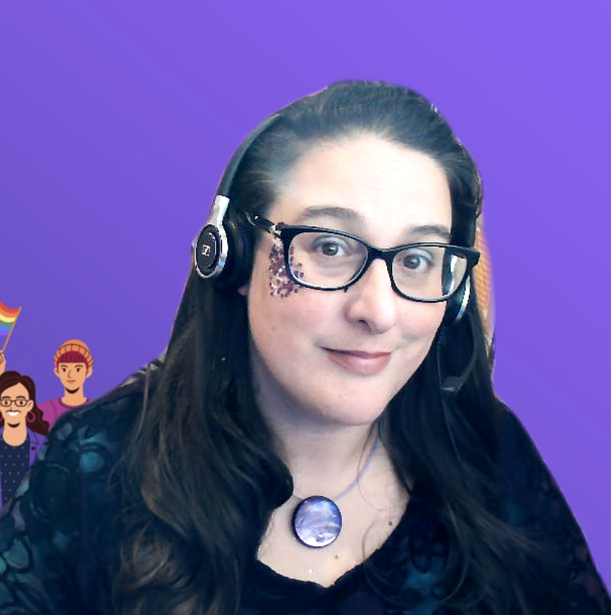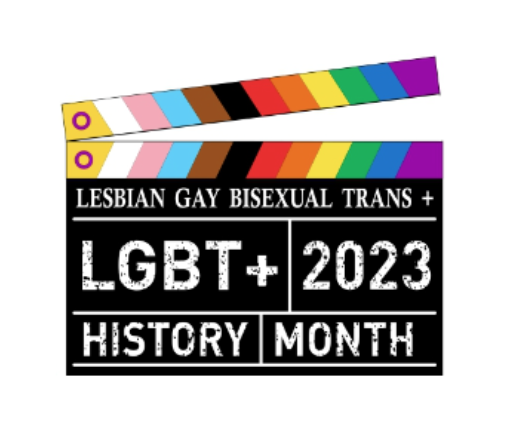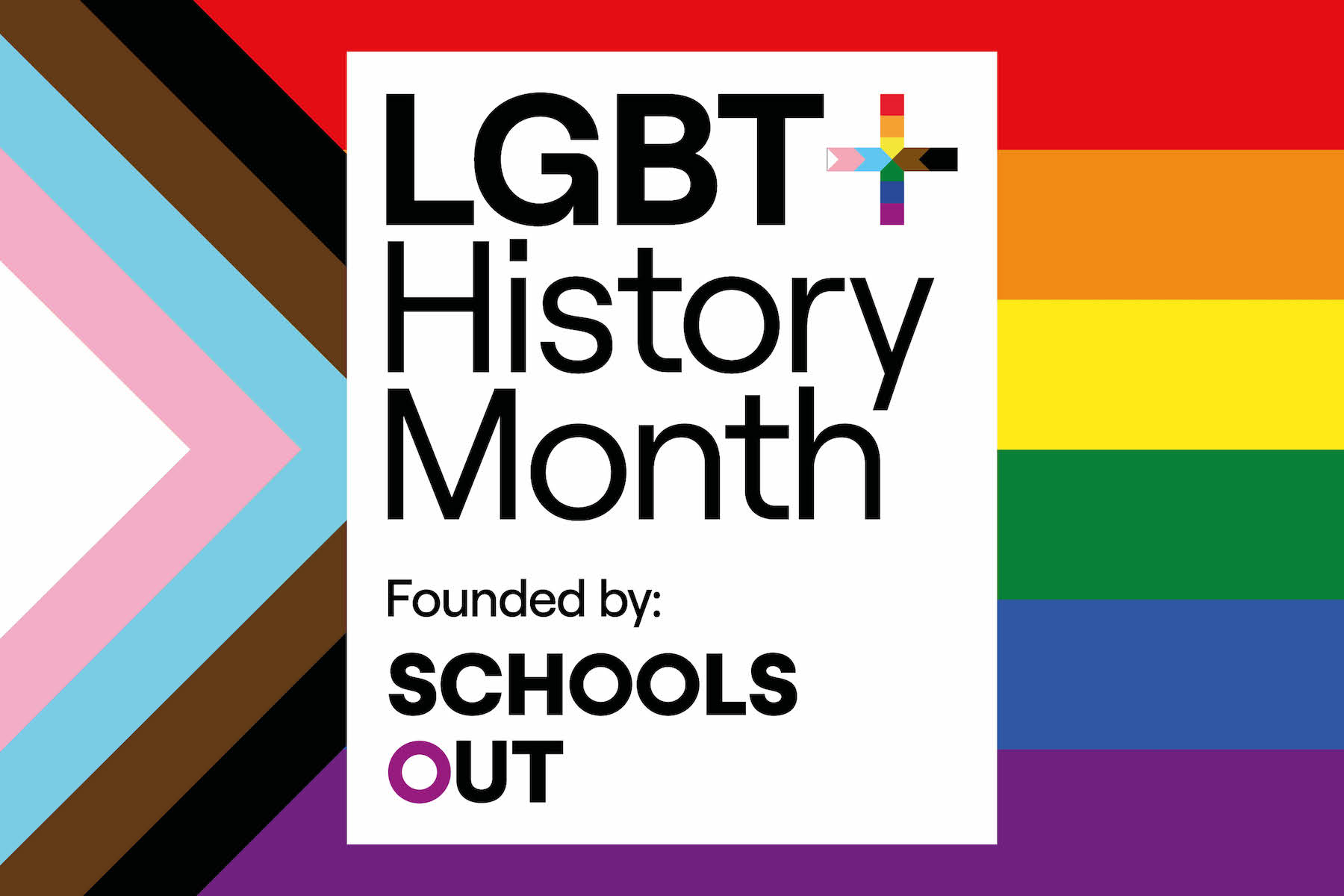Lynne Nicholls, the chair of trustees for Schools OUT, discusses the origins of LGBT+ History Month
LGBT+ History Month was first celebrated in the UK in 2005 and each year since has explored the rich history of LGBT+ people. We talk to Lynne Nicholls, the chair of trustees for Schools OUT, the organisation behind the event, to find out how it first came into existence and why it is so important.

• What is ‘Schools OUT’?
LN: School’s out originally formed in responses to John Warburton a gay teacher losing their job, basically, for being gay. As a result in 1974 a group of teachers got together to form the Gay Teachers Group which later became Schools OUT. So we’ll be 50 next year. Their mission originally was to support other teachers, and to create safe schools for LGBT+ people, from the catering staff, through to the teachers, through to the pupils. Anybody that worked in the school setting. They worked to try and get schools to be more inclusive. Not all of the changes to laws had happened at that point, so it was a difficult time to be working in that area. When Section 28 was announced they did lots of work campaigning against it. During Section 28 they worked to argue that it didn’t apply to schools even though it was thought it did. Essentially an earlier act argued that schools weren’t put in the public services but schools were very nervous and it basically ended up in practise being a blanket ban.
• What was section 28?
LN: Section 28 was a Government Act that basically meant you couldn’t talk about LGBT+ families within public settings, including schools. Margaret Thatcher at the time was referring to LGBT+ families as ‘pretend families’. The act meant basically, a school library wouldn’t have books about being LGBT+ and a library in general wouldn’t. I lived through section 28, it was only lifted when I was at university. It meant that you could never talk about LGBT+ lives in any way, positive or negative though people did still talk about it negatively. But you never had any positive role modelling. Have you heard of Heartstopper by Alice Oseman? A series was made from the Graphic novels on Netflix and it’s brilliant. I watched it, but as someone who grew up during section 28 I experienced a mourning for the kind of adolescence I never had, because I couldn’t be out and open and didn’t have that opportunity. It also meant that bullying was rife and couldn’t be dealt with. Many LGBT+ children just didn’t come out of education because they took their own lives. Section 28’s legacy is still felt because lots of schools don’t feel like they can cover LGBT+ topics. LGBT+ History Month is designed to ‘Usualise’ LGBT+ lives. Professor Emeritus Sue Saunders came up with the word ‘Usualise’ because normalised has such negative connotations. We encourage schools to use that word and to show that LGBT+ people are in all walks of life. If you can see that there are successful role models you can show that it does get better, that’s important when LGBT+ children are being really badly bullied. It’s even more difficult at the moment when some of the rhetoric that’s coming from leaders and coming from the press is very negative and has encouraged hate towards the LGBT+ community. I think the power of stories and the power of history is for people to learn from it and connect to it. I think if you’ve sit down and talk to LGBT+ person it makes it much more difficult to hate. Especially if you have really listened to their experiences and stories, learning from them. And that’s why we think History Month is so important.
• How did LGBT+ History month begin?
LN: When Section 28 was repealed the co-chairs of Schools OUT, Sue Saunders and Paul Patrick felt that nothing was being done to tell the story of LGBT+ people in schools. They came up with the idea of having an LGBT+ History Month. In the UK in October we have Black History Month and so the theme and concept of a history month was there. Because we’ve been hidden so long from history, it was about trying to reclaim and find our past. And then celebrate where we’ve got to and create our present; because learning from our past, can help us inform our future. They wanted a way that schools could do something easily, and that’s why February was picked as it was one of the quieter times in schools nad had a half term. It was launched in November 2004, first celebrated in February 2005. And from the beginning it was intersectional. It had trans representation on the panel, it had LGBT+ representation across the board on the panel, it had LGBT+ people who were disabled, LGBT+ people from different ethnicities and different religions, which was all pretty groundbreaking for time. From a small launch with 13 people on stage and probably only double that in the audience, there was nervousness about what would happen in the first year. But we need not have worried as hundreds of events took place across the country. Each History Month has an official badge, some were designed by designers, some by universities. Recently we introduced a school’s badge competition and that’s been a really important activity that schools can engage in. We also have a theme and we highlight four or five historical people connected to this theme. Our main resources are built around the people we’re highlighting, and each year’s theme is different. LGBT+ History Month is now for everyone with businesses, education settings, public services and local authorities taking part.

• What is this year’s theme?
LN: This year’s theme is behind the lens. When you go to the cinema, you see a massive long list of people at the end of the film but do you ever really take any notice of them? So we want to celebrate everybody in the LGBT+ community who works behind the lens in TV or in film. It also encourages pupils to look at different careers which might not be the obvious ones. A lot of people want to get into the entertainment industry but don’t know what options there are. So it’s been a really interesting theme and lots of people have really gotten behind it. But we also want people to look at how LGBT+ people are portrayed, because often we are portrayed in one particular way in the media. And we really wanted people to look a bit deeper and listen to LGBT+ voices. And that’s about celebrating where we are but also acknowledging where we are. And at this time, it’s obviously a very very challenging time for the trans and non binary community. So that’s why we really wanted to highlight it.
• Why is LGBT+ history month important?
LN: Section 28 is not dead. Because you just have to look at what’s happening in America especially Florida. Florida trying to is banning LGBT+ books from schools and libraries If you look to Europe, there are also areas that do not want LGBT+ material in schools. Even in the UK, recently there was a petition to take any reference to LGBT+ people out of primary education. All that is included is just age appropriate discussions of LGBT+ families and although encouraged is already optional. There are groups that don’t want LGBT+ History Month to happen especially in Schools. So there is the real fear that we could go back to that. Unfortunately, you don’t expect to see it from people in power and you don’t expect to see it from the media quite so much. It’s the same rhetoric that’s being used for the trans community that was used for Section 28, and it’s soul destroying to see the same arguments resurfacing again. One in four young homeless people are LGBT+ young people. That is 25% of homeless young people coming from the LGBT+ community, because attitudes at home mean they can’t be there. All children should have a chance in school, to thrive and feel safe. There is a massive backlash but there is hope, although there is definitely a challenge ahead. And there’s a rich history out there. And LGBT+ people have been here since the dawn of time.
• Are there any historical LGBT+ persons from this month’s theme you would like to highlight?
LN: Yes! Merchant Ivory, Merchant and James Ivory formed the film production company Merchant Ivory Productions. Merchant and Ivory were long-term life partners. Their professional and romantic partnership lasted 44 years from 1961 until Merchant’s death in 2005. The Guinness Book of World Records says theirs was the longest partnership in independent cinema history. Until Merchant’s death in Westminster, England in 2005 they produced nearly 40 films, many of which won awards.
Sharon “Rocky” Roggio a film and TV producer who’s film ‘1946: The Mistranslation That Shifted Culture’ is about to show at BFI Flare. It is really helping to change hearts and minds in the USA and beyond.
Finally the Yorkshire short film maker Rosie Adamson-Clark who is continuing to tell out LGBT+ stories and even helped train staff in the hospice she is receiving care in. You can watch these wonderful stories on her YouTube channel. They all show the power of LGBT+ people in TV and film to tell queer stories.
Find out more about LGBT+ History Month at its website. Likewise for Schools OUT
